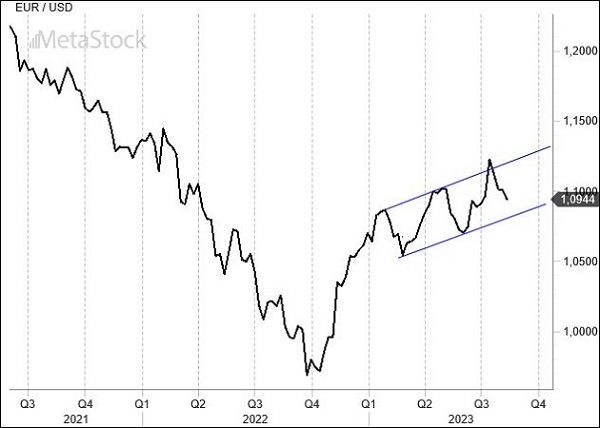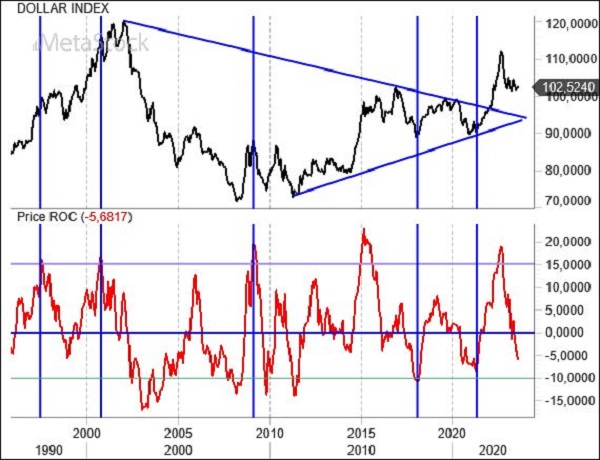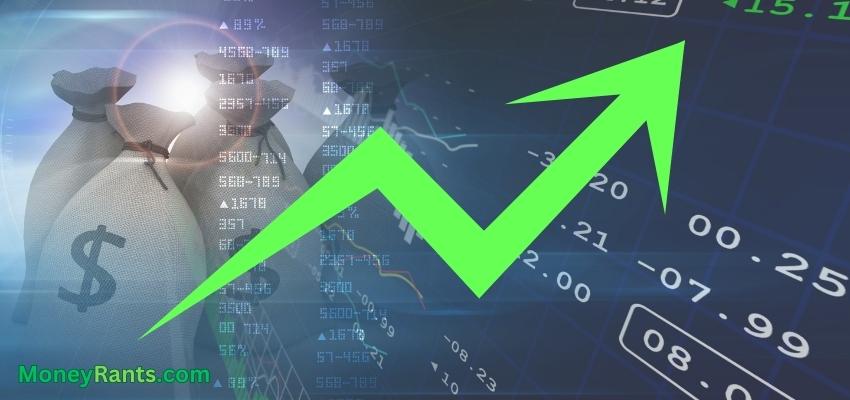- The US inflation figure for July confirms an annual increase to 3.2% after a year of contraction. The core data improves to below 5%, but for the FED, it’s still not sufficient given that producer prices have once again increased.
- In Europe, inflation expectations for the next 12 months continue to fall, but we are still well above the 2% target set by the ECB. This means that there won’t be any changes in monetary policy until the end of 2023.
- EurUsd is slowing its rise, but it hasn’t reversed its trend. The parabolic bull market at the end of 2022 is giving way to more consistent and less exaggerated growth. Up to 1.08, there is no sign of a reversal in the exchange rate trend.
A rating cut that could benefit the dollar
US inflation is rising again, and we are seeing the first increase in the headline figure after 12 months. With oil nearing $90 a barrel, it’s unlikely that external factors will assist in a further decline in the coming months, and the upward pressure is already evident in the producer price data.
Consumer prices in the US increased by 3.2% in July, compared to the expected 3.3% and up from 3% in June. The core figure also shows a price increase of 4.7%.
The growth forecast for the third quarter by the Atlanta FED remains substantial and is accelerating compared to the second quarter. The 4.1% against the 2.4% from the second quarter makes a rate cut unlikely in the near future. If the economy is this robust, why would inflation falter, barring seasonal effects, analysts ask?
Chairman Powell has openly stated that to cool inflation, a recession might not be necessary, but growth below potential is the mandatory path.
Added to this are differing voices within the FED, with some board members being more hawkish than others. The Jackson Hole meeting at the end of the month will clarify the US central bank’s intentions. However, the inflation data has already been helpful in understanding the environment the FOMC will face in September.
Meanwhile, inflation expectations in the Eurozone have significantly dropped. For the next 12 months, we’ve fallen from 3.9% to 3.4%, a result that undoubtedly pleases the ECB, which might halt increases in September.
There was a short-lived turmoil in European banks after the Italian government’s decision (later downsized) to tax extra profits. However, the euro remained unaffected by this news.
The bull catches its breath
Those who see current EurUsd signs of reversal forget the phase that accompanied the currency before 2023, specifically in the last quarter of 2022 when the rally of the European single currency was massive.
What’s happening now is simply a consolidation phase, a more consistent trend, less parabolic and marked by rising highs and lows. Up to 1.08, the EurUsd bull market is alive and well within the emerging bullish channel.

The dollar’s decline is proceeding as expected, without any excess. Yet it hasn’t bottomed out. The Dollar Index and its annual rate of change provide an interesting perspective at this point. When it exceeds certain growth levels, the dollar can be “served” on the market without many regrets. When it drops with annual percentages higher than 10%, it may be reconsidered by investors.
Currently, there’s still a 4-5% drop in the greenback needed to trigger a pattern that in 2018 and 2021 clearly indicated when it was time to reintroduce the American currency into portfolios.
Between 95 and 98, we will start analyzing every price action more deeply that might suggest a trend reversal favorable to the US dollar. For now, the context suggests a bit more patience before going long on the Dollar Index.



Leave a Reply
You must be logged in to post a comment.